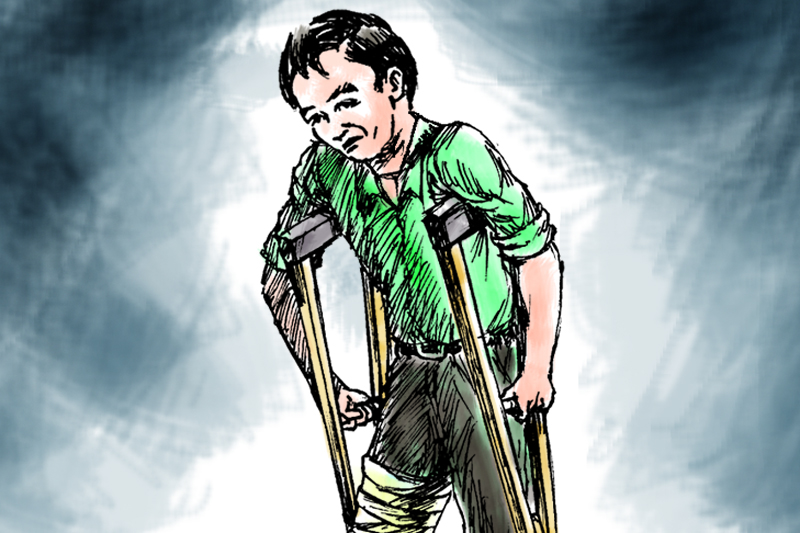Injury prevention: National priority issue
As our country looks to the next generation, with a new Constitution guaranteeing healthcare to the population, and federalism giving hope for stronger local infrastructure, we must advocate to our leaders to keep this issue on their agenda. The future of our country depends upon it
Injuries are a neglected epidemic in developing countries, causing more than five million deaths each year, roughly equal to the number of deaths from HIV/AIDS, malaria, and tuberculosis combined.
The seminal global burden of disease and risk factors study estimated that injuries accounted for more than 15 per cent of all ill-health in the world in 1990 and forecast that this will increase to 20 per cent by 2020.
The most common causes of injuries are traffic collisions, falls, drowning, burns and deliberate acts of violence (World Health Organization 2001). Injuries affect all people, regardless of age, sex, income, geography, or ethnicity.
Unfortunately, due to limited access to timely treatment and rehabilitation, injuries disproportionately affect the poor and rural populations, contributing to worsening inequities in health for these groups. While global epidemiologic data exists for many diseases – particularly infectious diseases – this same data is often lacking for injuries. Especially within Nepal, there is a dearth of locally-specific data, for any cross-section of our population. Perhaps this explains why, from the perspective of our health policy makers, other problems may be perceived as more urgent, making injury prevention advocacy that much more difficult.
However, what we do know about injuries in Nepal should be enough to motivate us to work to address this situation. Road traffic accidents, for example, are predicted to be the 7th leading cause of global deaths by 2030 (World Health Organization 2015).
The estimated annual cost of road traffic injuries likely exceeds US$500 billion worldwide (Richard 2009).
Here in Nepal, road traffic accidents are the most common cause of all injuries, with 7.5% of these accidents being fatal. Even more worryingly, due to the rapid urbanization of Nepal in the past decade, and the increase in motorcycles and cars (World Health Organization 2015), this trend is worsening, with more Nepali people hurt or killed in motor vehicle accidents each year (Nepal et al. 2015).
With better road traffic control laws, well-constructed roads and sidewalks, and more people wearing seat belts and helmets, many of these injuries are preventable, and could avert countless injuries and deaths in the coming years.
Preventable injuries lead to significant economic hardship and loss, both for families and countries, because the “bread winners” are disabled and thus unable to work. In 2015, the World Health Organization estimated that up to 5 per cent of the countries’ GDPs are lost due to preventable injuries.
In Nepal, a country in which many of our family-members migrate abroad to find jobs and send remittances back home, addressing this economic loss by working to prevent injuries, should be a national priority. Indeed, if we were able to avert even a small percentage of these injuries with better urban planning and policy changes, we may save significant economic productivity, helping our families and nation grow for the future.
In addition to injury prevention, Nepali people suffer from a lack of timely and effective management of injuries when they do occur.
In urban areas, medical and surgical services are available, but oftentimes are inaccessible to much of the population, due to financial or logistical constraints.
In rural areas, medical and surgical services are frequently unavailable, or profoundly difficult to access, making them available only to the wealthy. Contrary to what many believe, timely and high-quality medical and surgical services for injury management are actually cost-effective interventions for public health systems, preventing long-term disability and enabling people to continue to provide for their families and country.
In Nepal, where many are dependent upon jobs that require manual labor, and where resources for disabled persons are scarce, this is especially true. But this will require a significant up-front investment in health infrastructure, healthcare workers, and ambulances, all of which may seem expensive, but can and will save money and lives in the long-term.
Considering all of this, there is an urgent need for policy and funding to support both injury prevention and stronger health systems to manage injuries when they do occur.
As our country looks to the next generation, with a new Constitution guaranteeing healthcare to the population, and federalism giving hope for stronger local infrastructure, we must advocate to our leaders to keep this issue on their agenda. The future of our country depends upon it.
Pant is a consultant orthopedic surgeon at Grande International Hospital, Shrestha is a Registrar in the Department of Community Programs at Dhulikhel Hospital, and Schwarz is the Chief Medical Officer for Possible and is based at Harvard Medical School in Boston, USA






